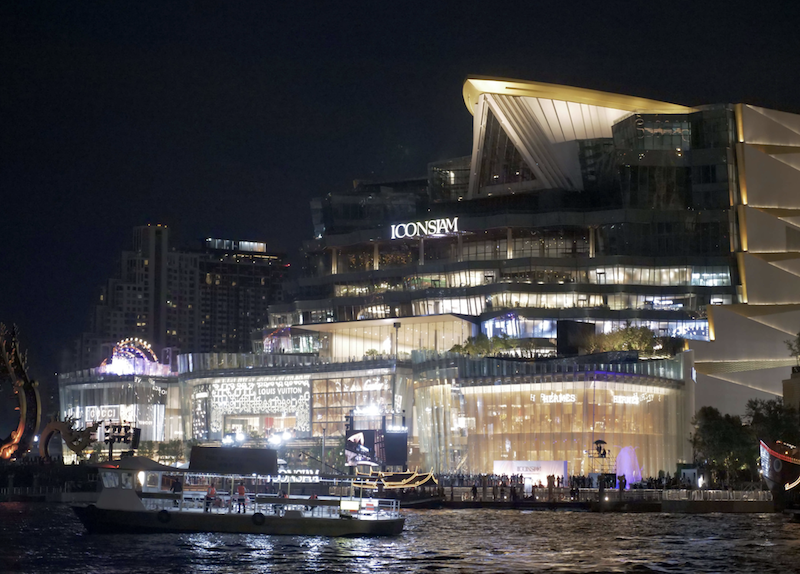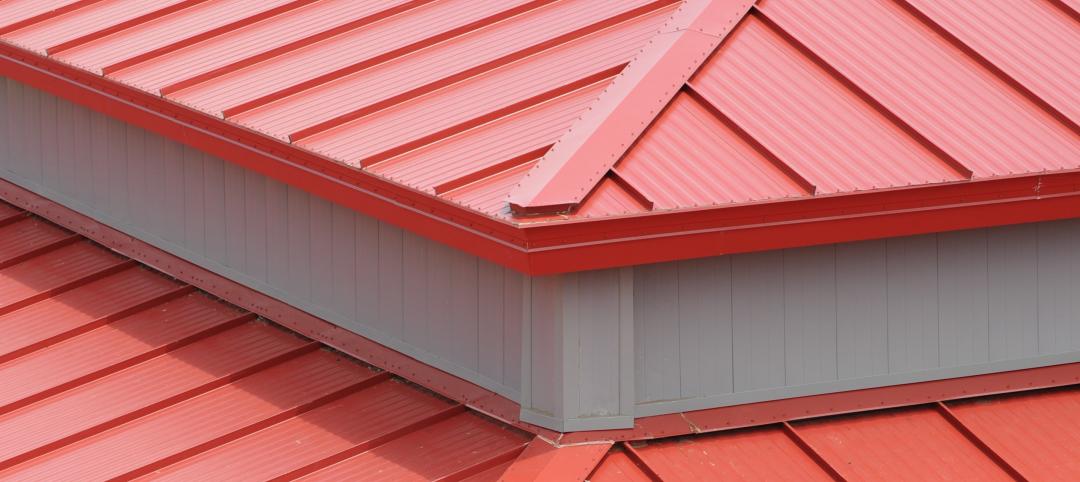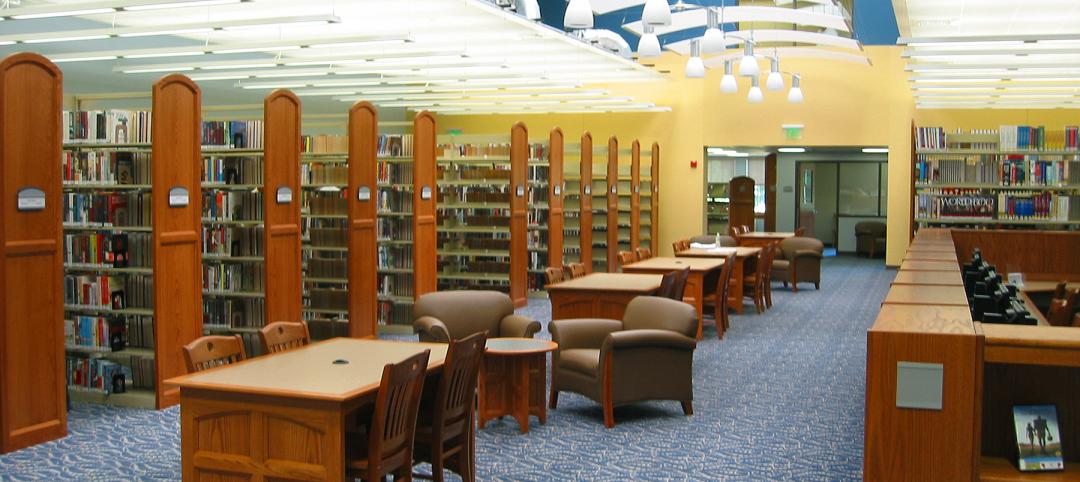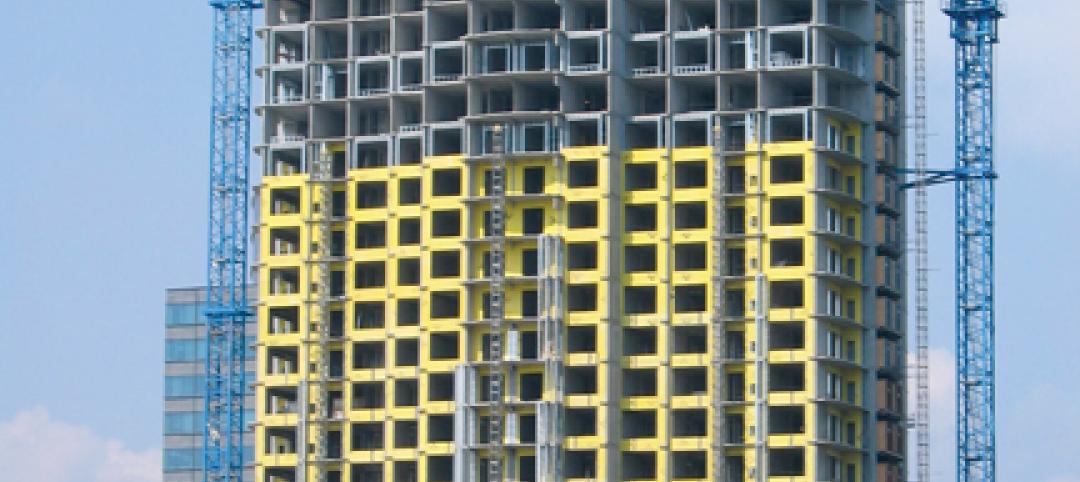When it opened along the Chao Phraya River in Bangkok, Thailand, on Nov. 10, the massive luxury shopping mall Iconsiam—self-identified as “the Icon of Eternal Prosperity”—boasted a number of firsts, including the longest (400-plus meters) water feature in Southeast Asia, and the first project in the country to integrate road, rail, and water transportation. (The complex is 1 kilometer from a station for the BTS Skyway monorail that will be completed next year.)
This 750,000-sm (8.072-million-sf) mixed-use complex, with 525,000 sm of retail space over 10 floors, is connected to Thailand’s first Apple store (and the largest in Asia), and also features a 10,000-sm River Park, a 3,000-seat auditorium, the National Treasure Museum, and two condo towers.
The complex, which cost 54 billion Thai baht to complete (the equivalent of US$1.67 billion, based on today’s currency exchange rate), is being positioned as a regional destination attraction. Its owners—the retail developer Siam Piwat, the conglomerate Charoen Pokphand Group, and MQDC Magnolia Quality Development—reportedly spent at least 1 billion baht promoting its complex’s debut, which included an opening-night performance by Alicia Keys and a red-carpet parade whose celebrities included the actress Naomi Watts.
But Iconsiam is more than just glitz and one-upmanship. From an engineering standpoint, it is distinguished by a pillarless suspended all-glass façade that is among the world’s longest: 300 meters long, up to 24 meters high, and having a surface area of 5,300 sm.
Iconsiam’s designer, Urban Architects, specified a pleated arrangement of glass panes that recalls local values and beliefs tied to the river, including “krathong” (a floating, folded sculpture) and “baisri” (the art of traditional flower arrangement with folded leaves.)
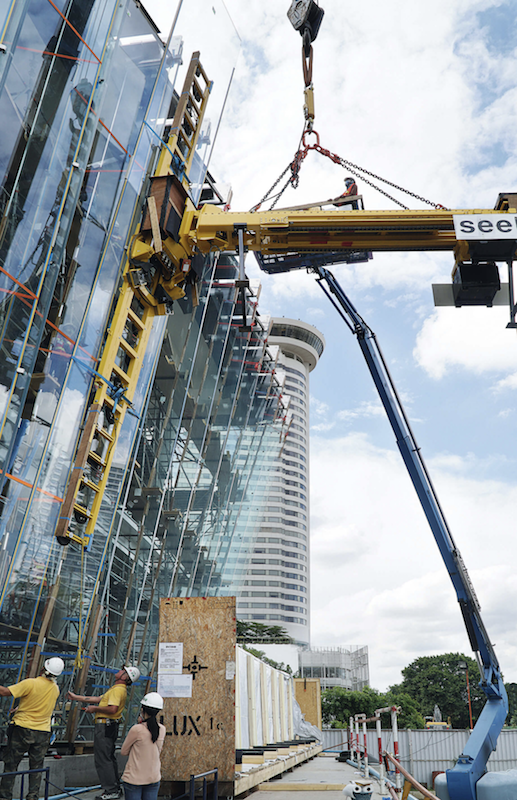
Installation of the glass panel assembly was achieved with a specially manufactured suction unit that allowed crews to position the panes into different angles. Image: Seele
To create this effect, the project’s building team, which included the façade construction specialist Seele, devised a special large-format (up to 25.6 sm for one piece), high-precision glass component weighing up to 3.5 tons per pane.
The façade is comprised of 333 glass panes that are supported by an equal number of 8- and 16-meters-long glass “fins.” The heat-strengthened glass used for the façade, known as TVG, was produced by Sedak. (This process cools the glass at a slower intensity, thereby producing compressive stresses that increase the glass’s strength.)
Seele produced the fins and stainless steel “shoes” for the façade off site at one of its locations in Germany.
The weight of the panes is absorbed at their lower end by transoms. Steel components connected directly to the glass were designed as bolted connections to eliminate losses in accuracy from welding distortion.
To install the façade assembly, Seele specifically developed for this project an apparatus with two suction units with counterweight and three-axial adjustment, which made it possible to lift the glass into its double-inclined position. (The glass fins have a 12-degree angle of inclination from the vertical. The inclination of the façade’s overhang is between 0 and 14 degrees.)
During the installation, custom-wood supports that formed the façade’s contour were used to temporarily stabilize the fins.
Thomas Spitzer, Managing Director of Se-Austria, a company within Seele, said in a prepared statement that the Building Team was able to complete the façade’s construction in under two years because the engineering and production were provided by a single source. “Iconsiam is a unique project for us,” he said.
Related Stories
| Nov 8, 2011
Transforming a landmark coastal resort
Originally built in 1973, the building had received several alterations over the years but the progressive deterioration caused by the harsh salt water environment had never been addressed.
| Oct 26, 2011
Metl-Span selected for re-roof project
School remained in session during the renovation and it was important to minimize the disruption as much as possible.
| Oct 24, 2011
BBS Architects & Engineers receives 2011 Sustainable Design Award from AIA Long Island Chapter
AIA LI also recognized BBS with the 2011 ARCHI Award Commendation for the St. Charles Resurrection Cemetery St. Charles Resurrection Cemetery Welcoming and Information Center in Farmingdale, NY.
| Oct 18, 2011
Dow Building Solutions invests in two research facilities to deliver data to building and construction industry
State-of-the-art monitoring system allows researchers to collect, analyze and process the performance of wall systems.
| Oct 14, 2011
University of New Mexico Science & Math Learning Center attains LEED for Schools Gold
Van H. Gilbert architects enhances sustainability credentials.
| Oct 14, 2011
AIA Continuing Education: optimizing moisture protection and air barrier systems
Earn 1.0 AIA/CES learning units by studying this article and passing the online exam.
| Oct 12, 2011
Building a Double Wall
An aged federal building gets wrapped in a new double wall glass skin.
| Oct 6, 2011
GREENBUILD 2011: Kingspan Insulated Panels spotlights first-of-its-kind Environmental Product Declaration
Updates to Path to NetZero.
| Oct 4, 2011
GREENBUILD 2011: Wall protection line now eligible to contribute to LEED Pilot Credit 43
The Cradle-to-Cradle Certified Wall Protection Line offers an additional option for customers to achieve LEED project certification.


